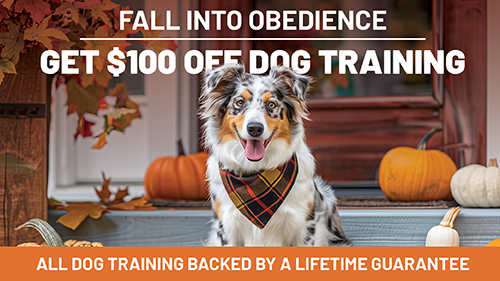
Training a dog is not just about teaching commands—it’s about fostering a well-rounded, confident, and obedient companion. While one-on-one sessions have their merits, group dog training classes offer a dynamic and enriching environment that accelerates learning, builds social skills, and nurtures good behavior in real-life scenarios.
At Top Dog Training and Resort, group training classes have helped countless dog owners achieve balanced, well-behaved pets through structured, expert-led instruction. This blog explores the distinct advantages of group training classes and why they may be the perfect choice for your furry friend.
Introduction to Group Dog Training Classes
Group dog training classes are structured sessions where multiple dogs and their owners train together under the guidance of a professional trainer. These sessions often focus on core skills such as sit, stay, heel, recall, and leash manners but also incorporate vital behavioral elements like socialization and exposure to distractions.
Unlike isolated home training, group classes simulate real-world environments, teaching your dog to focus amid various stimuli. Whether you’re working on obedience or behavior correction, the group dynamic offers built-in benefits that private training might lack.
Socialization: Building Confidence and Reducing Anxiety
One of the most immediate benefits of group dog training classes is socialization. Dogs are naturally social creatures, and their ability to interact positively with other dogs and people is crucial for their development.
Why Socialization Matters:
| Benefit | Explanation |
| Reduced aggression | Dogs exposed to others early and often are less likely to exhibit fear-based aggression. |
| Better behavior in public | Dogs that are comfortable around others behave better at dog parks, vet clinics, or cafes. |
| Confidence-building | Group settings help shy or anxious dogs become more comfortable and outgoing. |
Dogs that miss out on early socialization may become reactive or fearful in unfamiliar situations. A structured group class provides a controlled environment for positive interactions, helping your dog build confidence and form appropriate behaviors.
In addition, consistent interaction helps your pet develop emotional intelligence—learning when to be playful, submissive, or cautious. Over time, this exposure leads to a more adaptable and resilient dog.
Trainer-Led Sessions with Real-Time Corrections
Group classes are led by certified dog trainers who bring expertise, consistency, and structure to every session. Their role goes beyond giving commands—they provide immediate feedback, correct improper techniques, and help interpret canine behavior for better understanding.
In these trainer-led sessions, you’re not alone in guessing what works. Instead, you get professional insights tailored to your dog’s temperament and progress. Trainers also address common problems like jumping, leash pulling, or barking, and help modify behaviors through positive reinforcement.
Key Trainer Contributions in Group Settings:
- Demonstrating the correct way to issue commands
- Providing personalized tips during class
- Watching for signs of stress or overstimulation
- Ensuring a safe environment for all dogs
- Teaching owners effective body language and timing
Peer Learning: Dogs and Owners Learn from One Another
A unique feature of group dog training classes is peer learning—a phenomenon where dogs observe and mimic the behavior of others. When one dog responds to a command and is rewarded, others often try the same behavior to earn praise or treats.
This natural mimicry accelerates the learning curve, especially for puppies or less confident dogs. They see that sitting calmly or ignoring distractions earns rewards, prompting them to follow suit.
From the owner’s perspective, group settings offer a community of learners. You’ll see others facing the same training struggles, ask questions, and share solutions. This support system not only boosts morale but also enhances your training effectiveness.
Benefits of Peer Learning in Group Classes:
- Dogs mirror good behavior from others
- Nervous dogs gain courage watching calm dogs
- Owners exchange tips, progress updates, and encouragement
- Learning becomes fun and collaborative
A Structured Environment Encourages Consistency
A structured environment is key to successful dog training. Group classes offer a schedule, a defined set of exercises, and progress markers that make training more systematic.
Dogs thrive on routine, and weekly group sessions provide the consistency needed for lasting behavioral change. In contrast to casual at-home training, group classes create a rhythm—where your dog knows what to expect, which encourages anticipation, engagement, and focus.
Why Structure Matters:
- Repetition strengthens learning and retention
- Predictable environments reduce anxiety
- Gradual progression prevents overwhelm
- Trained routines extend into home life
Classes usually start with warm-up drills, core exercises, and cool-down periods. This familiar pattern helps dogs mentally prepare and reduces stress during learning. Over time, dogs understand that training is part of their lifestyle, not a temporary phase.
Cost-Effective and Time Efficient
Another compelling reason to opt for group dog training classes is their affordability. Private sessions can be expensive, especially for long-term goals, whereas group training often provides the same quality of instruction at a lower cost per session.
Additionally, group classes are time-efficient. Each session usually lasts 45 minutes to an hour, covering multiple skills within that timeframe. You’re training alongside others, which adds momentum and reduces downtime.
Cost Comparison Example:
| Training Type | Avg. Cost (Per Session) | Total Weekly Time | Added Benefits |
| Private Training | $100 – $150 | 1 hour | Personalized, but expensive |
| Group Training | $30 – $50 | 1 hour | Peer learning, socialization |
| DIY at Home | $0 | Varies | Inconsistent, lacks feedback |
Prepares Dogs for the Real World
Training a dog in your quiet living room is one thing—getting them to obey in the real world is another. Group dog training classes simulate real-life environments full of distractions, other animals, and humans, making them ideal for preparing your dog to behave outside the home.
Group sessions replicate situations like:
- Walking through busy parks
- Interacting at pet-friendly cafes
- Visiting the vet or groomer
- Greeting guests at home
This exposure makes dogs more adaptable, less reactive, and calmer in high-stimulation environments. It helps reinforce commands under pressure, which is essential for safety and control in unpredictable scenarios.
Why Group Dog Training Classes Are the Smart Choice
Choosing the right training format can significantly impact your dog’s behavior, personality, and overall quality of life. Group dog training classes combine expert guidance, social learning, structured progress, and real-world preparation in one powerful package.
Whether you’re raising a new puppy, correcting adolescent behavior, or reinforcing adult obedience, group training provides the framework to nurture a calm, confident, and well-behaved dog.
SCHEDULE A MEET AND GREET
Thank you for loving him!
While there, he did have a medical event which came as a surprise to everyone, I received a call explaining the situation and a suggested course of action. Being overseas there was little I could do. Again, Jenny and the Top Dog staff stepped up going beyond the call for Loki. Today, we picked him up, healthy and very happy and I cannot express enough gratitude for the amazing care, play and training these folks did for Loki. You guys are awesome!
Update: 3/15/24 Elodie is still going here and extremely excited when we pull in their driveway. I wish I could add more stars to their review! This past week was Elodie’s second birthday. They threw her a little birthday pawty and gave her a doggie cookie-cake! I updated the photos to show a screenshot of a video they provided to me. I’m so pleased with their care of my fur baby ❤️
FAQs (Frequently Asked Questions)
Puppies can begin group training as early as 8–10 weeks, provided they have initial vaccinations. Early socialization is key, but group training is beneficial at any age.
Group sizes vary, but most classes have between 5–10 dogs. This balance ensures personal attention while maintaining a lively, distraction-rich environment.
Bring a leash, treats, a clicker if used, water, and your dog’s favorite toy. Make sure your dog is wearing a comfortable collar or harness.



